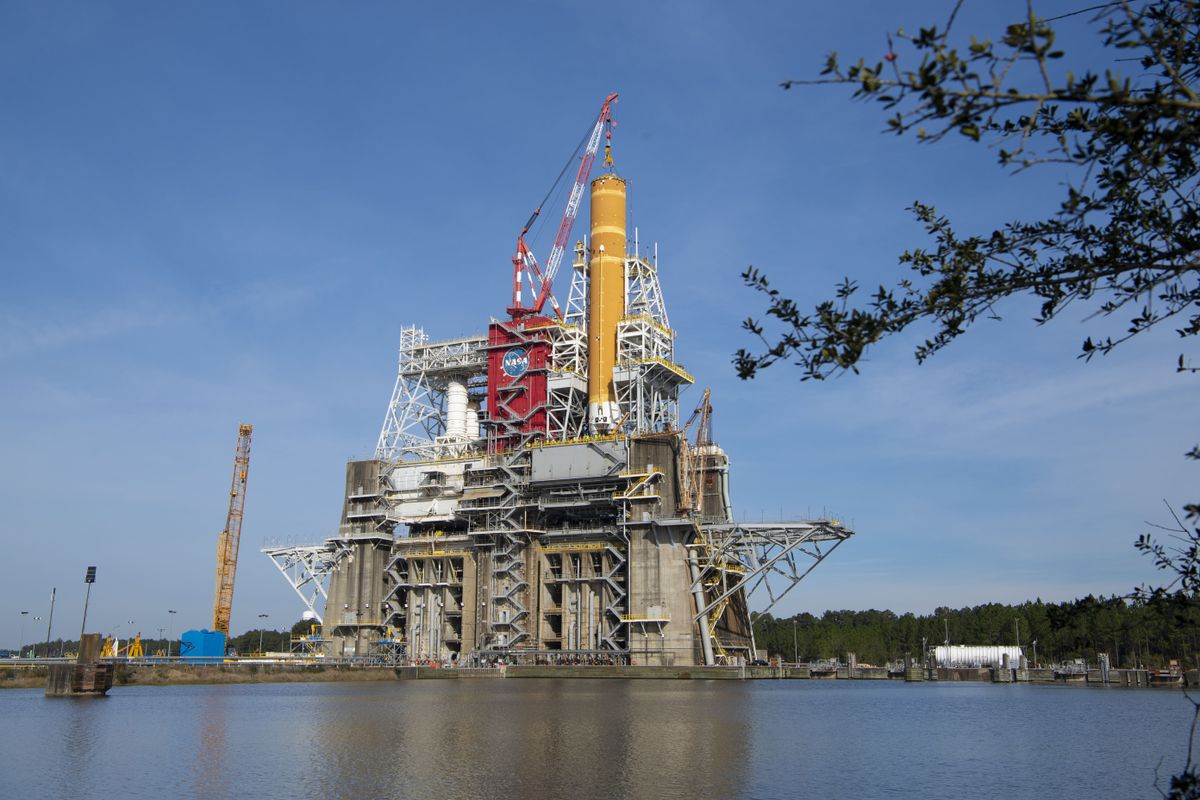
NASA and Boeing engineers are evaluating how to move forward with the final test of the Space Launch System (SLS) moon-bound megarocket after an early shutdown during a "wet dress rehearsal" on Sunday (Dec. 20).
At stake is the launch date for Artemis 1, the first uncrewed flight of NASA's program to land humans on the moon by 2024. This lunar-orbiting mission is supposed to lift off in late 2021, but that largely depends on timely and successful testing of the SLS before the rocket travels to Florida for final construction and launch.
The testing campaign has been slowed by precautions to reduce the spread of COVID-19 and by a string of hurricanes in the Gulf of Mexico. Earlier this month, the team managed to move past ground equipment issues in loading the propellant, fully equipping the rocket tanks with 700,000 gallons (2.6 million liters) of liquid oxygen and hydrogen. While the core stage "performed well" with the propellant loading and replenishing at NASA's Stennis Space Center in Mississippi, the test unexpectedly ended early, according to a NASA statement.
Photos: NASA's 1st SLS megarocket core stage for the moon has its engines
"Part of the test was to simulate the countdown with the tanks loaded, leading up to 33 seconds prior to the engines firing," NASA officials wrote in a blog post published on Monday (Dec. 21).
"However, the test ended a few minutes short of the planned countdown duration. The core stage and the B-2 test stand are in excellent condition, and it does not appear to be an issue with the hardware. The team is evaluating data to pinpoint the exact cause of the early shutdown."
After NASA completes this dress rehearsal, the SLS will then undergo a "hot fire" test, during which all four of the rocket's engines will be fired at the same time to make sure they are set for spaceflight. The agency has not outlined alternatives to this testing plan in case more work is required to prep SLS for flight.
NASA's challenges in its quest to put humans on the moon by 2024 aren't just related to SLS. The agency is also facing funding issues for its human landing system (HLS) program in its fiscal 2021 budget of $23.3 billion. HLS only received $850 million, a quarter of the administration's request of $3.3 billion; that said, the Orion spacecraft, SLS and exploration ground systems were at or above NASA's requested budget for those elements.
Agency administrator Jim Bridenstine told the National Space Council on Dec. 9 that NASA would likely require its full HLS budgetary request to make the moon-landing deadline on time. "Ultimately, if we don't get the $3.3 billion, it gets more and more difficult," he said.
A timely lunar landing will also depend on NASA finishing all the technology testing for associated moon systems, such as new spacesuits to protect astronauts on the lunar surface. Earlier this month, the agency put 18 astronauts on the shortlist for moon missions; additionally, the Canadian Space Agency pledged one of its four astronauts would join the preparatory Artemis 2 crewed lunar-orbit mission scheduled for 2023.
Follow Elizabeth Howell on Twitter @howellspace. Follow us on Twitter @Spacedotcom and on Facebook.
Article From & Read More ( NASA's SLS megarocket 'hot fire' test delayed after early shutdown in fueling trial - Space.com )https://ift.tt/3rmydMh
Science
No comments:
Post a Comment